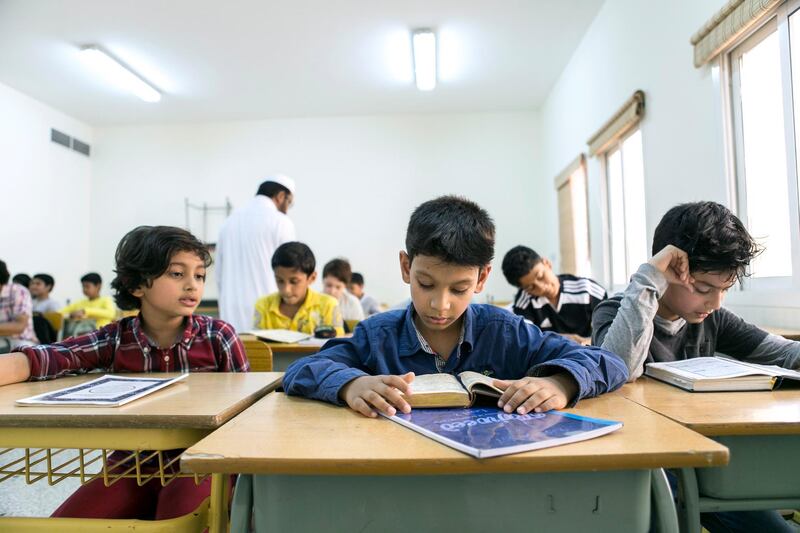Old buildings and inadequately maintained air-conditioning units are leading to poor air quality levels in schools across the UAE.
Experts warned outdated construction techniques combined with a lack of effective insulation was potentially putting children’s health at risk.
Other factors adding to the issue included some schools overusing chemical products to clean classrooms and hallways.
Poor air quality can lead to respiratory problems, with knock on implications for children’s attention spans and attendance rates.
“The old building stock is a problem not only in UAE but all over the GCC,” said Nada Chami, a senior manager at the French sustainable construction firm Saint-Gobain.
“Older buildings were constructed prior to air quality regulations, with 70 to 85 per cent of them not insulated effectively.
“This means their air tightness is poor which can allow pollutants to come through.”
Warnings over the UAE’s need to address air quality in schools came as architects, engineers and school management teams came together in Dubai to discuss ways to improve building design.
Experts from the Emirates Coalition for Green Schools, which advocates for more environmentally friendly classrooms, and the Emirates Green Building Council organised the one-day event.
Calling for a substantive government programme to upgrade old school buildings, Ms Chami argued it was critical new schools were given proper advice in terms of selecting suitable building materials.
She also said stronger enforcement measures were required to check air quality, ensuring schools were more focused on tackling the issue.
“Regulations are there but the implementation and enforcement of these is poor,” she said.
“Children are more sensitive to low indoor air quality. They are easily affected by anything that can pollute their respiratory system while teachers can also suffer.
“In some cases the ventilation systems [at schools] aren’t adequate and are not providing enough clean oxygen.
“If you don’t clean these systems they will have a bad impact. Sometimes, children also leave doors and windows open which can lead to poor air quality entering the building.”
________________
Read more:
Children 'at risk from poor quality of air in schools'
UAE students at risk from poorly maintained air-conditioning at schools
UAE ramps up efforts to tackle air pollution
________________
Hala Yousef, head of sustainability at MENA - Cundall, an international design consultancy, agreed that poor maintenance and cleaning practices was damaging air quality in schools.
She recommended that dependence on chemical cleaning agents be reduced, that air conditioning units were overhauled, and that staff had access to the latest and most effective vacuum cleaners.
“Cleaning the space is important,” she said. “I also really think we need regulations.
“We have more and more information available that shows the benefits of good air quality but more controls need to be implemented.
"Once it is on their [school's] agenda, they can tell their contractor who can increase ventilation and add a good filter.
“Existing schools should get a certain time to make these changes.”
Lora Shrake, director of the Emirates Green Building Council, also insisted schools needed to start measuring their air quality.
“By raising awareness we can emphasise the importance of retrofitting older buildings,” she said.
Some schools in the UAE, however, already have such checks in place.
Taaleem schools in Dubai said they conducted indoor air quality tests as a matter of routine.
“We are actively seeking collaboration with local universities to further enhance the research being conducted,” said Sam Truman, head of projects and facilities at Taaleem Schools.
“This research, we anticipate, will lead to useable data that will enable schools to evaluate the effects of air quality on student performance and sickness.
"We will also seek to investigate, with the support of research universities, cost-effective solutions that could be made available to all schools in the UAE, not just our own.”
In 2012, a study of air quality in four government schools in the UAE found the quality to be poor.
The British University in Dubai study measured soot particles in classroom air and found extremely high levels.
While recommend guidelines suggested a maximum of 15 milligrams per metre cubed, the study found between 200mg and 250mg.







